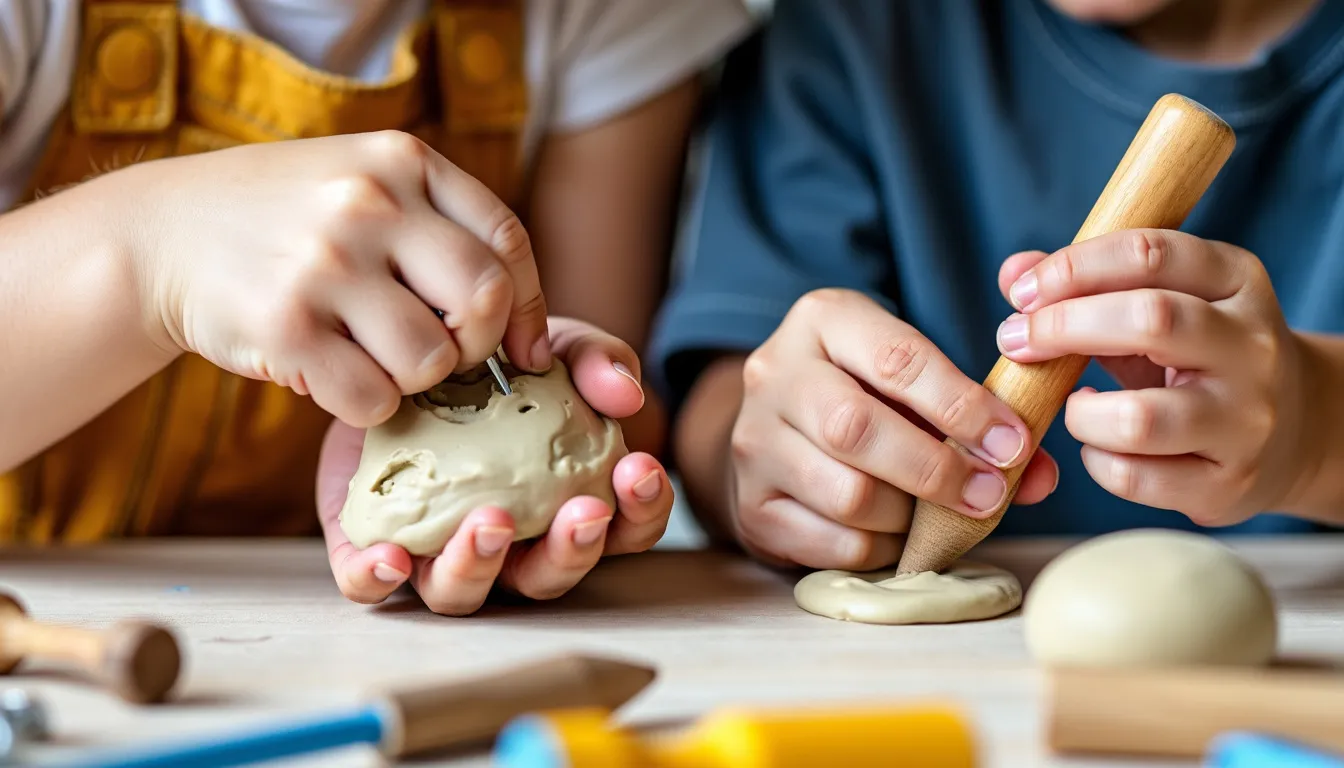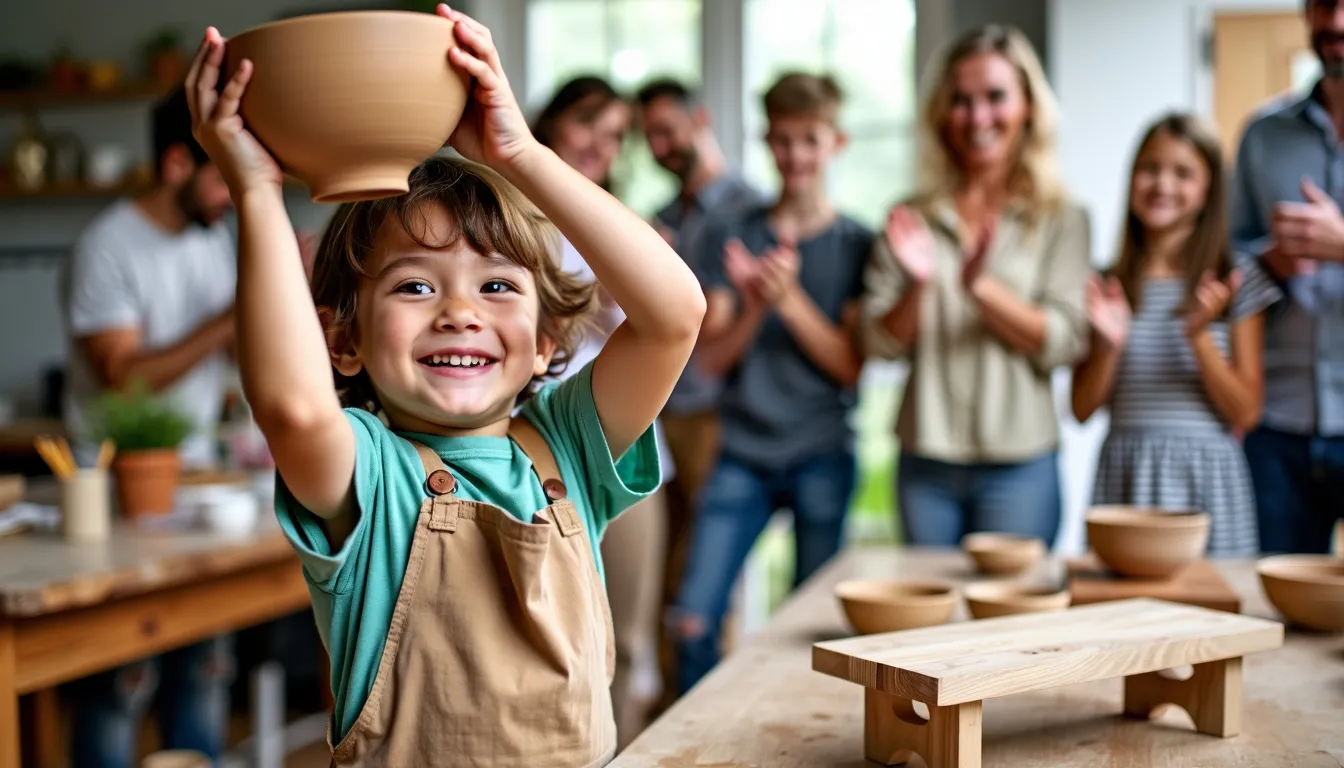Pottery and Woodworking Classes for Kids with ADHD: Transforming Focus and Confidence

Attention-deficit/hyperactivity disorder (ADHD) presents unique challenges for children, often impacting their ability to focus, stay organized, and regulate their emotions. While traditional academic environments may struggle to meet the needs of children with ADHD, creative and hands-on activities like pottery and woodworking offer a valuable outlet. These activities help children engage both their minds and bodies, providing numerous therapeutic and developmental benefits that support their growth.
In this journal, we will explore the benefits of pottery and woodworking classes for children with ADHD, and why these hands-on, creative activities could be a game-changer for their emotional and cognitive development.
1. Improving Focus and Attention

One of the primary challenges faced by children with ADHD is their difficulty in maintaining focus. Pottery and woodworking provide a tactile, immersive experience that encourages prolonged attention. Because both activities require intricate hand movements, steady focus, and step-by-step processes, they naturally pull children into a state of concentration. The physical involvement helps reduce distractions and forces them to focus on the task at hand. For additional support in establishing consistent focus, parents might find it useful to explore top apps to support ADHD focus.
Pottery
Pottery requires children to concentrate on shaping the clay, keeping the wheel steady, and maintaining pressure—all activities that require sustained attention. The repetitive, soothing motion of working with clay can help ADHD children enter a flow state, where they become absorbed in the activity and maintain focus for longer periods. Parents can further support these focus benefits through tools like an ADHD monitoring checklist for parents, which aids in tracking progress and changes in attention over time.
Woodworking
In woodworking, tasks such as measuring, cutting, sanding, and assembling pieces require precision and focus. ADHD children often benefit from this kind of detailed work, as it channels their energy into creating something tangible. Additionally, parents looking to create structured daily routines that improve focus might find resources on managing morning routines with ADHD beneficial. Handling tools and materials allows children to work through each step, helping them build executive functioning skills like planning, organizing, and completing tasks in sequence.
2. Building Patience and Emotional Regulation
Children with ADHD often experience difficulty with impulsivity and emotional regulation. Pottery and woodworking help develop patience, as both activities require time and careful attention. Whether it’s waiting for a pot to dry or methodically sanding a piece of wood, these processes encourage children to slow down, think carefully, and make deliberate choices. For those looking to complement these activities with additional resources, games for emotional regulation can provide further support in teaching patience and emotional management.
Pottery
Working with clay can be unpredictable, and mistakes are common—whether it’s a collapsed pot or a misshapen handle. These “mistakes” provide opportunities for children with ADHD to practice frustration tolerance and emotional regulation. Over time, they learn how to handle setbacks with greater calm and resilience. Pottery also encourages children to appreciate the process rather than focusing solely on the end result, which can help them develop a sense of patience and mindfulness.
Woodworking
Woodworking teaches kids how to work through complex, multi-step processes. Because each step (such as measuring or cutting) requires patience and precision, children practice delayed gratification and learn to take pride in the incremental progress they make. Mistakes in woodworking—such as cutting a piece too short or sanding unevenly—are valuable learning experiences. These moments can benefit from mindfulness techniques like those discussed in mindfulness and meditation for ADHD, allowing children to develop patience and resilience.
3. Enhancing Fine Motor Skills

Fine motor skills are essential for children’s cognitive and physical development, and activities like pottery and woodworking help significantly improve these skills in children with ADHD.
Pottery
In pottery, kids use their hands to shape, mold, and manipulate clay. The sensory-rich experience of working with different textures, combined with the fine motor control needed to create specific shapes, helps refine their dexterity and hand-eye coordination. Rotating a pottery wheel, creating symmetrical designs, and sculpting small details all require precision, which helps children develop control over their fine motor movements.
Woodworking
Handling tools such as hammers, saws, and screwdrivers helps children improve their grip strength and hand coordination. These tools require specific techniques that promote motor control and accuracy. Woodworking also promotes spatial awareness, as children must visualize and execute their designs, which helps develop their ability to conceptualize space and movement. Parents might also explore therapeutic options like a sauna for ADHD management to complement physical skills development.
4. Boosting Creativity and Self-Expression
Both pottery and woodworking provide an opportunity for creative expression, which is essential for children with ADHD. These activities allow children to explore their imagination, experiment with different forms, and express themselves through their work.
Pottery
Pottery offers endless possibilities for creativity—whether it’s creating a functional object like a cup or bowl or experimenting with abstract forms and shapes. The flexibility of working with clay allows kids to express their individuality in ways they may not have the chance to do in traditional settings. Creating something with their hands gives children a sense of pride and accomplishment, which can boost their self-esteem and provide an outlet for emotional expression.
Woodworking
Woodworking enables children to design and create their own projects, fostering innovation and problem-solving. Whether they’re building a birdhouse, a toy car, or a small piece of furniture, woodworking provides an outlet for creative thinking. The hands-on nature of woodworking encourages children to experiment with materials and techniques, allowing them to develop their creative skills in a way that’s tangible and rewarding.
5. Building Confidence and Self-Esteem

Children with ADHD often struggle with confidence due to challenges in academic or social settings. Pottery and woodworking offer them opportunities to succeed outside of these environments, where they can experience tangible success and gain confidence in their abilities. Parents can further support this confidence-building with strategies for parenting kids with ADHD, focusing on approaches that reinforce their child’s strengths and self-worth.
Pottery
Each completed pottery piece is a physical representation of a child’s effort and skill. This sense of accomplishment helps children with ADHD feel empowered and reinforces their ability to complete tasks. Because pottery is a low-stakes activity where children can experiment and make mistakes without judgment, they are more likely to develop confidence in their abilities over time.
Woodworking
Successfully completing a woodworking project, especially when it involves multiple steps and tools, gives children a deep sense of pride and achievement. These tangible successes can boost their self-esteem and encourage them to tackle new challenges in other areas of life. The skills learned in woodworking—such as persistence, problem-solving, and attention to detail—can translate into greater confidence in academic and social settings.
Final Thoughts: Why Pottery and Woodworking Matter for Kids with ADHD
Pottery and woodworking offer more than just fun activities for children with ADHD; they provide critical developmental benefits that can improve focus, emotional regulation, fine motor skills, and creativity. These activities help kids engage both mentally and physically, offering an outlet for their energy and an opportunity to build essential life skills in a supportive, hands-on environment. For parents exploring diverse approaches, additional therapeutic options like sauna for ADHD can further support their child’s development and symptom management. Incorporating pottery and woodworking into the lives of children with ADHD can be transformative, providing them with the tools to manage their symptoms while developing important skills for long-term success.
Discover the Power of Creative Tools for ADHD Parenting
Explore how our Bonding Health app can support your child’s growth through targeted resources for ADHD parenting. Just as pottery and woodworking enhance focus and emotional regulation, our app offers daily guidance, strategies, and tools to empower your child’s development. Sign up today for our free ADHD Journals to stay informed on creative therapies, emotional regulation techniques, and more. Discover how Bonding Health can support you and your child’s ADHD journey.
Download the Bonding Health app here and take the first step towards transformative support.


